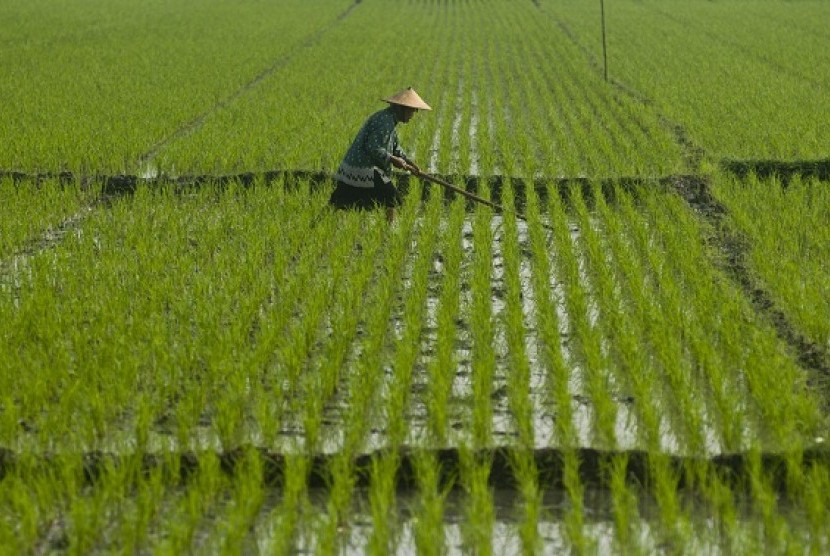REPUBLIKA.CO.ID, JAKARTA - Indonesia's two presidential candidates have pledged to increase the amount of farm land to improve self sufficiency, although previous such plans by Asia's top importer of wheat and a major buyer of other grains and edibles have often stumbled.
In the case of rice, a high-profile attempt by former autocrat Suharto to restore Indonesia's self-sufficiency in the 1990s under Central Kalimantan's Mega Rice Project on Kalimantan island proved disastrous due to the ill-suited peat land soil.
The rich volcanic soil on Java can support up to three rice harvests a year but land is running out on the densely populated central island of the archipelago. Indonesia plans to import at least half-a-million tonnes of rice this year.
Pawan Kumar, an analyst at Rabobank International, said rice and corn offered the best opportunity to increase production, mostly through improving yields given a scarcity of land.
"But commodities like soybeans, wheat and sugar would be more challenging," said Kumar, citing the cost of land conversion and cultivation compared to cheaper imports.
Indonesia's agro-food imports have more than quadrupled in a decade to about 18.4 billion USD in 2013, according to the Organization for Economic Cooperation and Development. Indonesia has to import all its wheat, with rising wealth encouraging people to eat more bread, noodles and fast foods.
But unless it lifts output of soybeans, corn, sugar and rice Indonesia will have to rely on imports from places such as Australia, the United States, Brazil and Thailand. President Susilo Bambang Yudhoyono introduced self-sufficiency targets in 2009 after food prices soared, but many have not been met partly due to red tape and corruption scandals over import quotas that caused shortages for food such as beef. His administration also tried to encourage a greater use of home-grown cassava to replace rice in meals.
In Yudhoyono's second term, agricultural land only rose by 700,000 hectares, well below a target of 2 million hectares, Agriculture Minister Suswono told Reuters. Indonesia has less available agricultural land than many countries. According to the OECD, agricultural land covers about 53.6 million hectares, or around 30 percent of the total land area.
The two contenders to replace Yudhoyono have also made promises to increase food production, though they have given few details. Front-runner Joko Widodo has said he will fix damaged irrigation systems to open up 3 million hectares of agricultural land if elected on July 9.
His rival, ex-general Prabowo Subianto, has said he would open up 2 million hectares of new land for rice, corn, soybeans and sugarcane, that he says will also provide 12 million jobs. Agriculture policy will be among issues discussed by the presidential candidates during a televised debate on July 5.
Agriculture accounts for about 15 percent of GDP in Indonesia and around 35 percent of the population depend on it as their main source of income.


